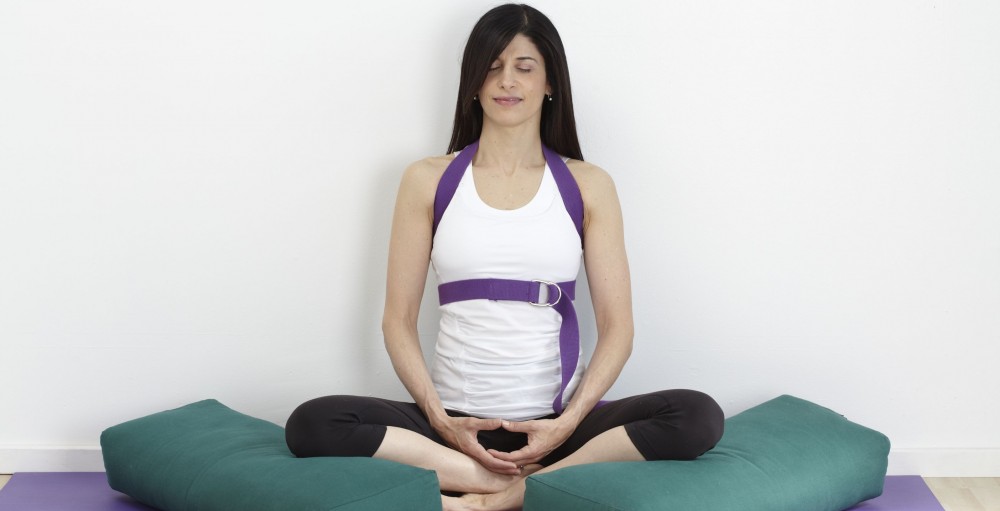YOGA: From the Sanskrit, “yug”, to join or connect, the state of the mind when it is still, a union of body, breath, mind and spirit….
HATHA YOGA: Consists of 8 limbs of practises which build one upon the other:These 8 (ashta) limbs (anga) are cultivated with practise, progression, patience, surrender…in effortless effort one reaps numerous benefits in all areas of life; thus YOGA is a practical methodology for living a meaningful, happy and healthy life…
1. The YAMAS (how we relate to others: our actions/thoughts/speech)
1. The YAMAS (how we relate to others: our actions/thoughts/speech)
AHIMSA (Consideration for all living things) qualities such as kindness, patience, tolerance
SATYA (Right communication) qualities such as honesty in behaviour and thought, integrity, sincerity
ASTEYA (Non-covetousness) not taking something that is not yours, reining in those desires so that you do not live in a constant state of unfulfilled desires.
BRAHMACHARYA (Moderation in actions) Not indulging the senses above all else, rather channelling these energies to cultivate higher states of consciousness, celibacy as a tool for self-discovery
APARIGRAHA (Non-greediness) Consider what are your true needs, as opposed to desires, instead of grasping, enjoy what you have.
2. The NIYAMAS (how we relate to ourselves)
SAUCHA (Purity) Cleanliness of body, mind, spirit, environment.
SANTOSHA (Contentment) Accepting the present, feeling satisfied with what we have in this present moment, to the extent of being peaceful but not complacent, when times are tough to be able to keep one’s equanimity.
TAPAS (Burning enthusiasm) Strong resolve and self-discipline
SWADHYAYA (Self-study) turning attention inward leads to self-discovery
ISHVARAPRANIDHANA (Celebration of spiritual) Surrender to a higher power, and knowing that this omnipresent force lies within each of us
 3. ASANA (postures) yoga Asana is a posture where you are externally still yet internally alive. To take part in asana practise is to use your body as a doorway through which to experience and remember the truth about who you are. Since we have a body we have an opportunity to use it as a tool. From the Sanskrit “seat” the English translation “pose”, implies that there is a “holding”, an action that requires effort and mental presence. By holding an asana we can integrate the body and mind; the breath is the link between the two. In fact, more than poise or some idea of “perfect’ posture, the breath should always remain graceful. The posture itself, according to the Yoga Sutra which dates back over 2000 years, should have the qualities of alertness and relaxation
3. ASANA (postures) yoga Asana is a posture where you are externally still yet internally alive. To take part in asana practise is to use your body as a doorway through which to experience and remember the truth about who you are. Since we have a body we have an opportunity to use it as a tool. From the Sanskrit “seat” the English translation “pose”, implies that there is a “holding”, an action that requires effort and mental presence. By holding an asana we can integrate the body and mind; the breath is the link between the two. In fact, more than poise or some idea of “perfect’ posture, the breath should always remain graceful. The posture itself, according to the Yoga Sutra which dates back over 2000 years, should have the qualities of alertness and relaxation4. PRANAYAMA (Control of the life force/prana) Conscious regulation of the breath and prana, through different techniques
 5. PRATYAHARA (Withdrawal of the Senses) The senses look outward and can be distracting and stress-inducing; learning to go within to find the calm inner sanctuary
5. PRATYAHARA (Withdrawal of the Senses) The senses look outward and can be distracting and stress-inducing; learning to go within to find the calm inner sanctuary6. DHARANA (Concentration) To maintain a mind undisturbed in its focus requires mastery over it through practise
7. DHYANA (Meditation) One-pointed single focus around a subject. Quiets the mind, a state of restful alertness known to decrease blood pressure, decrease stress-related conditions such as hypertension, heart disease, asthma, insomnia, digestive problems etc. In Latin, “meditator” means “healing” and meditation practises is key in alternative medicine. Also, studies show meditation practises increase intelligence, memory, and decision-making abilities and slow the ageing process.
8. SAMADHI (Bliss state) The goal of YOGA is to abide in this sense of Oneness, the mind is mastered and thoughts are stilled in this illuminated trance-like perception
 YOGA practise is like tending a garden. Allow yourself to be immersed in the organic and on-going journey, without judgement, criticism or expectations. You will reap the benefits!
YOGA practise is like tending a garden. Allow yourself to be immersed in the organic and on-going journey, without judgement, criticism or expectations. You will reap the benefits!A few guidelines
-Leave a few hours after eating before practising postures and pranayama, so there is no competition with digestion
-Wear non-restrictive clothing; it is nice to cover yourself during relaxation
-It is not a competition; listen to your body, your own pace, and your own voice
-Rather than a sense of “perfecting” anything, use everything as practise and self-discovery
-Practise peacefully, allow yourself that time and space to “empty” your mind, turn off the cell phone, whatever it takes.
–Relaxation is a process of conscious rest, and allows the subtle energies stirred up by the asana to be directed towards self-healing and to re-energise and re-balance the system, practise!
om shanty shanty shanty,
Rana
om shanty shanty shanty,
Rana








